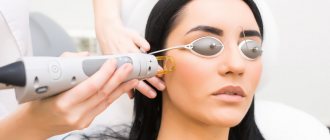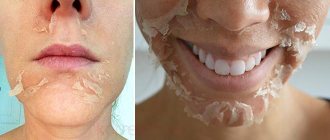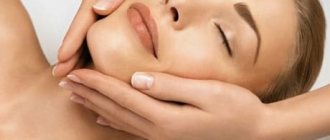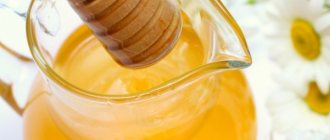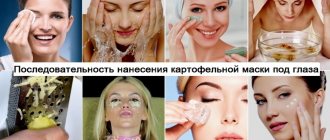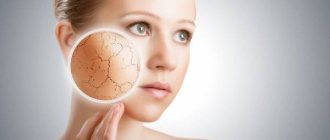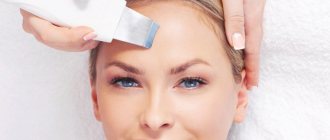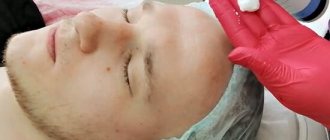Time, alas, cannot be turned back. Although at heart we are always no more than 20, an indifferent mirror shows the true picture day after day, reflecting all the wrinkles, unevenness and other flaws of the body. However, the miracles of modern cosmetology in the form of laser technologies help to get rid of annoying shortcomings and significantly prolong youth and beauty, visually reducing the distance between the passport and internal age. The laser facial resurfacing procedure gives amazing results, which in many ways are not inferior to the effects after surgery.
What is laser facial resurfacing?
Over the past decades, aesthetic medicine has made many confident steps forward. Now something that people could not even imagine before is possible - many complex operations perfectly replace short-term non-contact manipulations. Today, it is quite possible to restore a healthy glow to the skin, remove wrinkles, and visually rejuvenate the face by 5-10 years using a laser resurfacing procedure.
In essence, grinding plays the role of peeling, only the cosmetologist removes the top layer of the epidermis not with the help of an applied solution, but using a special laser installation. The laser beam has a destructive effect on dead cell structures, bringing them to a boil and causing them to evaporate under the influence of heat and light. After the procedure, new, young cells actively divide, allowing their owner to get rid of:
- from wrinkles;
- from age spots, freckles, post-acne;
- from acne scars, acne, post-operative scars;
- for acne;
- from uneven skin texture;
- from enlarged pores;
- from stretch marks;
- from boring tattoos;
- from sagging skin.
In addition to the above effects, after the procedure the rapid production of your own collagen and elastin is activated, which helps strengthen the skin frame and restore its turgor.
It is worth noting that, depending on the depth of beam penetration, laser resurfacing can be divided into:
- superficial;
- factional;
- deep.
Also, there are such types of devices for performing this manipulation:
- Carbon dioxide laser (CO2). The effect of using CO2 is famous for its duration. However, this advantage is counterbalanced by high trauma, a long rehabilitation period and high chances of experiencing negative consequences due to damaging effects.
- The erbium laser is not as dangerous in terms of possible complications as the carbon dioxide laser, but the effect produced after its use is 2-3 times less.
- Low-intensity laser is the most gentle of all three types of hardware techniques. However, the results of its impact are corresponding - the weakest.
Each of the above techniques has its pros and cons. To determine what is right for you, you need to consult an experienced specialist.
Possibilities of laser rejuvenation
Laser treatment of the skin has many advantages and allows the patient to achieve record results in rejuvenation without the use of plastic surgery.
Complete fractional rejuvenation is an effective way to look younger
What does laser rejuvenation provide:
- improves the appearance of the skin;
- provides muscle tightening;
- tightens pores;
- reduces the number of wrinkles;
- removes age spots;
- restores elasticity and tissue turgor;
- allows you to get rid of cosmetic defects (scars, acne marks, etc.).
Photothermolysis helps clear skin of pigmentation and even out tone in just 3-4 treatments
Surface laser resurfacing
With this peeling, the laser acts on the epidermis, penetrating to a depth of no more than 10 microns, which is equal to only 0.001 mm. This seemingly small amount allows you to get rid of many minor skin imperfections and prevent age-related changes. This procedure is perfect for young people 30-35 years old.
This type of grinding method is completely non-contact. Only laser light acts on the problem area. It is completely safe, does not require any serious preparation before the procedure, and special skin care after.
The procedure for surface grinding is as follows:
- First of all, the cosmetologist determines the patient’s skin type and selects the appropriate type of laser and attachment for it.
- Approximately 40-60 minutes before the manipulation, the specialist anesthetizes the surface of the skin (usually by applying a special cream, for example, Emla), and also cleanses the upper layer of the epidermis with antiseptic agents.
- To protect the eyes, both the cosmetologist and his client wear dark glasses.
- The skin is treated with laser for 5 to 60 minutes. Time may vary depending on the size of the problem area.
- After completion of radiation exposure, the skin is treated with regenerating ointment (Traumel S, Bepanten, Kuriosin, etc.)
If the cosmetologist did everything correctly and the procedure went without incident, the patient does not experience any unpleasant sensations after it and can immediately go home. The rehabilitation period after superficial laser resurfacing lasts approximately 8-10 days.
Contraindications and possible consequences of laser rejuvenation
Laser rejuvenation may be contraindicated if the patient has certain chronic diseases and certain body characteristics. This is due to the fact that the laser effect on a person can aggravate existing pathologies, therefore the procedure has strict contraindications for:
- insufficient blood clotting;
- risk of blood clots;
- autoimmune pathologies (rheumatoid arthritis, AIT, lupus erythematosus);
- inflammation of the skin of unknown origin;
- skin diseases (herpes, psoriasis, vitiligo, neurodermatitis);
- precancerous condition or confirmed oncological process;
- a large number of moles on the body;
- natural tan recently;
- diabetes;
- hypertension (high blood pressure);
- kidney disease (chronic form);
- postoperative period;
- decreased immune function;
- phlebeurysm;
- psycho-emotional disorders, including mental illness;
- treatment with antibacterial and hormonal drugs;
- predisposition to colloid scarring;
- pregnancy, lactation period.
The use of laser rejuvenation can accelerate the progression of cancer or transform benign moles into malignant ones.
Despite the safety and high-tech nature of laser devices, there is always a risk of complications. It is impossible to accurately calculate the risk. Sometimes the next session provokes certain complications, but all negative consequences have a root cause:
- illiteracy of a cosmetologist;
- low-quality device;
- carrying out the procedure without taking into account contraindications;
- improper skin care during the rehabilitation period.
Possible side effects include:
- skin burn;
- crust formation;
- itching and redness;
- scarring of tissue;
- activation of herpes infection;
- hyperpigmentation;
- the appearance of whiteheads;
- accession of infection and purulent process.
The use of a fractional CO2 laser is accompanied by deep penetration of the rays and destruction of the epidermis, which causes severe redness of the face for 5–7 days
If you are planning to remove acne marks as a teenager, prepare for a long recovery period. Facial redness, crusting and skin sensitivity are guaranteed for a month! But from personal experience I will add that regular Panthenol will help improve the condition: after 2-5 weeks the skin will become perfectly smooth.
Video: complications after laser skin resurfacing
Fractional laser resurfacing
This technique was patented by an American company back in 2004. Its essence is the targeted effect of a laser with penetration to a depth of approximately 0.1 mm. The beam does not affect the entire surface of the skin, but, as it were, “drills” many microholes in it. This method allows tissues to recover faster, thanks to which the technique has gained fame as being gentle. During regeneration, the “wells” left by the beam quickly shrink and heal, and the face subsequently acquires a toned and smooth appearance, and the pores narrow.
A huge advantage of fractional resurfacing is that in one visit to a cosmetologist you can treat large areas of the skin; in addition, the laser can even affect particularly sensitive areas: the area around the eyes, décolleté, neck, nose, and even the upper and lower eyelids. It should be taken into account that after blepharoplasty, laser resurfacing of the eyelids can be carried out only after the end of the full rehabilitation period, which is about 1 year.
The procedure is identical to surface grinding. Rehabilitation lasts approximately the same time - 10 days.
Deep laser resurfacing of the face
This service cannot be found in the first salon you come across. Only reputable clinics take responsibility for performing this technique, because the beam during such a serious manipulation penetrates to a depth of 1.5 mm, which can cause healing to take longer.
The procedure for carrying out the deep peeling procedure is as follows:
- A special anesthetic gel is applied to the skin.
- The laser is applied to the topmost layer of the epidermis, removing keratinized scales.
- The depth of laser penetration is increased by gradually evaporating cells from different sides.
To achieve the desired effects, the procedure is carried out three times, following the above scheme. After all the manipulations done, the skin will not be in its best shape, however, what lengths do beautiful women not go to achieve their goal?
Restoration of the skin will last approximately 2-3 weeks, during which time it is necessary to strictly follow all doctor’s instructions:
- If necessary, apply dressings for the first few days.
- Drink analgesics.
- Apply ointments that accelerate regeneration.
- Do not wash your face or use cosmetics for 5-6 days.
- Do not take hot baths, do not visit solariums and baths, do not sunbathe.
A repeat procedure, if indicated, can be done no earlier than 4 months after the previous one. It is during this time that the skin will fully recover after deep laser resurfacing.
Carrying out the procedure
Regardless of the type of laser rejuvenation used, a specialist always examines the condition of the skin, can prescribe a course of antiherpes medications and even take a blood test to rule out diseases that are a contraindication to the procedure.
Laser rejuvenation itself consists of the following stages:
- Cleansing and treating the skin with anesthetic cream or gel.
- Cooling of the epidermis.
- Exposure of the skin to laser micropulses.
- Treatment of inflamed epidermis with an antiseptic and special products with soothing and regenerating effects.
What to pay attention to during the procedure:
- The procedure is carried out in a clean room treated with an antiseptic.
- According to sanitary and hygienic standards, an employee of a cosmetology salon is obliged to give the patient a cap and special glasses.
- During the laser rejuvenation process, minor pain is allowed. If an unbearable burning sensation occurs, you need to notify your cosmetologist.
- The maximum duration of the procedure is two hours.
Video: fractional laser facial resurfacing
Drugs used in laser rejuvenation
To ensure that the laser skin treatment process is painless, painkillers are applied to the skin. Clinics and salons may offer one of the following types of local anesthesia:
- Anesthetic gel. A professional anesthetic is applied to the skin under the film 30 minutes before laser exposure. Complete absence of sensitivity is ensured for three hours.
- Local cooling. It can be used as a stand-alone anesthesia for superficial rejuvenation, or in combination with an anesthetic gel if deep penetration of the beam beam is prescribed.
- Vibrata. The use of a vibration anesthesia device allows you to enhance the effect of the previous two methods.
In some salons, laser rejuvenation occurs without prior anesthesia. If you are allergic to analgesics, ask which institutions use MeDioStar Next laser technology. Thanks to a special Peltier attachment made of sapphire, the rejuvenation process will be absolutely painless without the use of chemicals.
Before laser rejuvenation begins, the facial skin is cleansed and treated with an anesthetic gel.
Contraindications:
- any inflammatory processes on the skin;
- installed pacemaker, severe diseases of the cardiovascular system;
- oncological processes of any localization;
- period of pregnancy and lactation;
- skin tendency to form keloid scars;
- tuberculosis;
- diabetes;
- mental illness;
- epilepsy;
- period of exacerbation of chronic diseases;
- disorders of the blood coagulation system;
- infectious diseases;
- menstruation period, PMS, altered hormonal levels.
Consequences after laser resurfacing
It is fair to mention that complications after this procedure are extremely rare. However, the deeper the laser penetrates the skin, the higher the risk of developing the following problems:
- Erythema is pronounced redness of the skin associated with the rapid spread of the inflammatory process.
- Pigmentation, which those with dark skin are prone to;
- Infection;
- Formation of keloid scars;
- Burns;
- Rashes. If pimples appear on the skin, under no circumstances should you squeeze them. In the vast majority of cases, they appear due to the frequent use of fatty creams used to speed up regeneration. In 99% of cases, the red dots will go away on their own within 1-2 weeks.
To avoid such unaesthetic consequences, you should take a very responsible approach to choosing a clinic and a specialist. It’s better to spend extra time looking for a good doctor who you can trust with peace of mind with your face, than to spend months restoring your beauty and flinching every time you look in the mirror.
How much does laser facial resurfacing cost?
Pricing policies vary depending on many factors: the type of device, the depth of laser penetration, the condition of the skin, the number of sessions required and, of course, the area of problem areas. In addition, each clinic or salon asks for its own prices for the services provided. You shouldn’t chase cheapness, because, as everyone knows, free cheese... Don’t skimp on your beauty, better ask yourself, will the best specialists in the city work for pennies? The answer is obvious, isn't it?
Answering the initial question, prices for laser resurfacing in good clinics in our capital start at 3,000 rubles and go up to 22,000 for 1 session.
Is it possible to do laser resurfacing in the summer?
If you scour the Internet, you can find many statements that this procedure should absolutely not be done in the summer. Allegedly, ultraviolet radiation has a detrimental effect on damaged skin, causing many complications. Such statements are only partly true.
In fact, categoricalness here is applicable only in relation to deep grinding; all other types can be done at any time of the year. Yes, after leaving the salon you will not be able to sunbathe or take sunbathing for a while, but thanks to the short rehabilitation period you will not have to endure this injustice for long. In just a couple of weeks you will shine with beauty, boldly exposing your face to the sun.
Skin care after the procedure
After laser resurfacing, you can appear “in public” no earlier than 10-14 days after the manipulation. Until then, the skin needs proper care.
To speed up the recovery of damaged tissue, in the first days you can:
- Apply ice to your face. Exposure to cold should not exceed a couple of minutes with a frequency of 2-3 times a day.
- Moisturize the skin with serums or ampoule concentrates. They must be selected by the specialist who carries out the procedure.
- Use Curiosin. This gel gives impetus to cells for their rapid regeneration, so it should be applied 2-3 times a day.
- Sleep on your back using a high pillow.
Also, if deep resurfacing took place, you need to take medications prescribed by your doctor: antibiotics, painkillers, NSAIDs.
Reviews
As for laser resurfacing using carbon dioxide, reviews are mostly positive. Procedure rating 4 out of 5. After the procedure, the skin condition improves significantly, but the effect is noticeable after several months.
Most often, patients indicate a long recovery period, discomfort during the rehabilitation period, severe pain during the procedure, high cost, and the need to perform the procedure multiple times (in the most severe cases, when the skin has many defects).
Sometimes there are negative reviews about the procedure due to the severe pain that must be endured during laser treatment. Also, the pain syndrome makes itself felt for several days after the procedure. Redness and swelling may not go away for several days (up to a week). In addition, laser resurfacing has many contraindications.
A girl will tell you about her experience of laser facial skin resurfacing in this video:
Comparison of laser resurfacing with other popular techniques
Many beauty salons provide assistance with various aesthetic problems. Each specialist works with his own range of services, persistently praising only them. It is simply impossible for one person to cover everything, even if he is a professional three times over. Who to believe, and how to choose the only correct procedure for yourself, without risking getting into the distribution of “what is”? Before consulting your doctor, take some time to learn a few techniques that you think may have good effects. And then, having accumulated a little knowledge, feel free to go to the reception. In addition to laser resurfacing covered in this article, there are several techniques that can serve as an alternative:
- Laser peeling is more gentle and is suitable for patients over the age of 25, while resurfacing is used for more mature skin - from 35-35 years and above. In addition, resurfacing is not applicable to people with thin skin, unlike peeling.
- Chemical peeling is carried out by applying acids to the surface of the epidermis, which destroy cellular structures. The laser operates non-contactly, and with the fractional method it does not cover the entire surface of the skin, giving it the opportunity to recover faster and preventing the occurrence of burns.
- Fractional photothermolysis, or Fraxel, is very similar in its action to resurfacing and is also carried out using a laser beam. Many people even confuse these 2 concepts. However, there are still fundamental differences between them. During the thermolysis procedure, old cells are destroyed in small “islands”. Then, a reasonable question arises: how does Fraxel differ from fractional laser resurfacing? Thermolysis is less aggressive; after it, the affected area does not become crusted or scarred, and after the procedure only slight peeling is noted.
Advantages and disadvantages of laser rejuvenation
Like other skin rejuvenation procedures, the laser method has its pros and cons.
Table: advantages and disadvantages of laser procedures
| Advantages | Flaws |
|
|
The cost of laser rejuvenation depends on the area of the treated area, the device used and the level of the clinic. On average, one session will cost 30,000 rubles.
Safety measures during laser rejuvenation
Laser rejuvenation requires the fulfillment of a number of requirements:
- Do not sunbathe 14 days before and after the procedure.
- A week before and after laser rejuvenation, do not take Aspirin, Ibuprofen, or hormonal medications.
- One month before the procedure, do not use self-tanning products.
- After a laser rejuvenation session, use sunscreen with a high SPF factor for a long time (even in winter!).
- Avoid chemical peeling before rejuvenation.
After laser rejuvenation, you must use sunscreen with a protection level of at least 50
Combination with other rejuvenating procedures
Laser rejuvenation goes well with most cosmetic procedures, both hardware and injection. Carrying out laser resurfacing with other anti-aging procedures in combination gives the highest results. The exception is chemical deep peeling, after which the skin needs to be given several weeks to recover and only then proceed with laser rejuvenation.
In beauty salons, laser resurfacing can be combined with RF lifting (non-surgical skin tightening with radio frequency energy), hyaluronic acid injections, glycolic lifting, thermolifting, etc.
